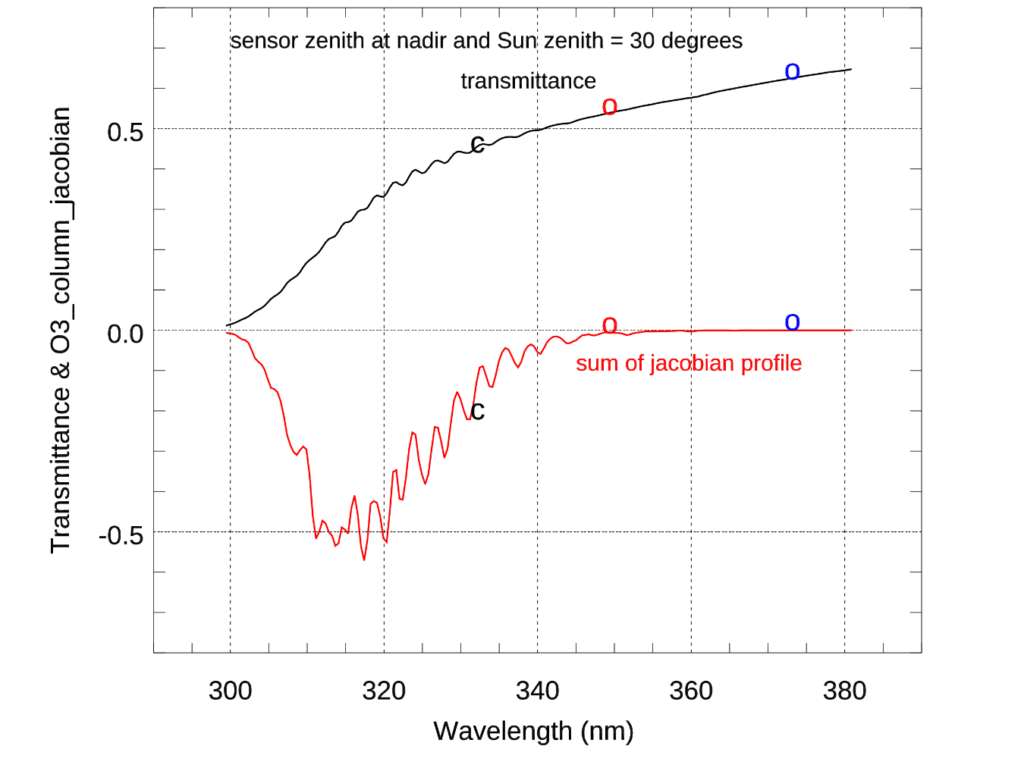
ESSIC/CISESS scientists Christopher Grassotti and Xingming Liang are co-authors in a recently published study that documents the first ultraviolet radiance assimilation for atmospheric ozone in the troposphere and stratosphere. The paper, titled “Experimental OMPS Radiance Assimilation through One-Dimensional Variational Analysis for Total Column Ozone in the Atmosphere”, was published in Remote Sensing and includes co-authors from the NOAA/NESDIS Center for Satellite Applications and Research.
Surface reflectance is an important parameter to the Ozone Mapping and Profiler Suite (OMPS) nadir mapper (NM) radiance simulation for radiance monitoring and radiance assimilation for ozone in the atmosphere, because all OMPS nadir mapper channels are sensitive to the surface. Grassotti, Liang, and their coauthors propose a linear spectral reflectance model that can be determined inline by fitting two OMPS NM channel radiances at 347.6 and 371.8 nm, two channels which have nearly zero sensitivity on atmospheric ozone. To derive the surface reflectance from OMPS NM measurements at the two channels, a simple retrieval procedure was developed with the help from the Community Radiative Transfer Model (CRTM).
This study serves as a preliminary demonstration of direct ultraviolet radiance assimilation for total column ozone in the atmosphere. The experiment has also provided better understanding of which observations need to be assimilated, what bias correction scheme may be optimal, and how to obtain surface reflectance.
Grassotti received a B.S. degree in earth and space science from the State University of New York at Stony Brook, Stony Brook, NY, USA, in 1982, tan M.S. degree in meteorology from the University of Wisconsin-Madison, Madison, WI, USA, in 1986, and an M.S. degree in viticulture and enology from AgroMontpellier, Montpellier, France, in 2007. From 1986 to 1991 and again from 1993 to 2005, he was a Research Associate, Senior Research Associate and Staff Scientist with Atmospheric and Environmental Research, Inc., Lexington, MA, USA. From 1991 to 1993, he was with the Atmospheric Environmental Service, Environment Canada, Dorval, QC, Canada. Since 2008, he has been with the National Oceanic and Atmospheric Administration, NOAA Center for Satellite Applications and Research, National Environmental Satellite, Data, and Information Service, College Park, MD, USA. He has been a Senior Faculty Specialist with ESSIC/CISESS since 2015.
Xin-Zhong Liang is a professor at the University of Maryland and earlier at the University of Illinois. He is the head of the Earth System Model Research and Development Laboratory in the Earth System Science Interdisciplinary Center. His principal research topics include developing and applying integrated earth system models to study climate variations and environmental impacts, building decision support systems for human-nature interactions, and projecting coupled system changes to address food-energy-water nexus and sustainability issues.
To access the paper, click here: “Experimental OMPS Radiance Assimilation through One-Dimensional Variational Analysis for Total Column Ozone in the Atmosphere”.






